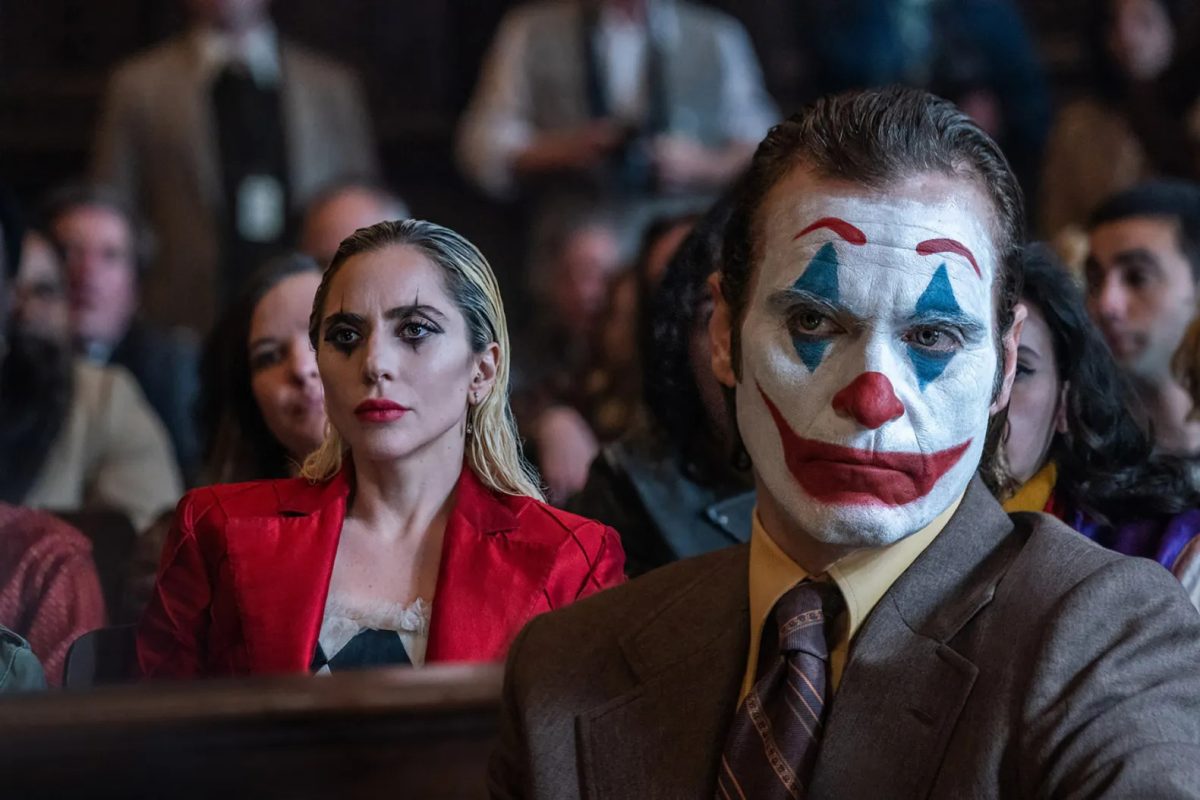Starring Joaquin Phoenix as Arthur Fleck (Joker) and Lady Gaga as Lee Quinzel (Harley Quin), “Joker” sequel “Joker: Folie à Deux” did little to live up to its highly acclaimed predecessor. In the film, Fleck awaits his trial for the crimes he committed two years prior while in custody at Arkham State Hospital. If you were looking forward to anything else, expect to be let down.
The film opens with a short, Looney Tunes-style animated clip in which the Joker is impersonated by his shadow. This short clip, directed by Sylvain Chomet, was a recreation of a pivotal scene from the first movie where Fleck shot a TV host on live television. It’s all downhill from here, as the opening is the best and only good part of the sequel.
While the end of “Joker” left some room for further expansion, it really didn’t need a sequel, and it’s clear director Todd Phillips felt the same way. “Joker: Folie à Deux” had no direction, was slow, boring and worst of all included excessive musical numbers. Every time Phoenix or Gaga began to sing, I rolled my eyes, knowing I was about to suffer through a poor performance that in no way advanced the plot. Not only was the singing unnecessary, but Fleck and Quinzel seemed to break into song every chance they got with over ten musical numbers in the two-hour movie.
Fleck and Quinzel’s chemistry was underwhelming to say the least. Instead of a doctor-patient relationship like in the first movie, Fleck and Quinzel were both inmates at Arkham where they, at one point, attempt to escape. I went into the movie excited to see more of Harley Quinn’s character but quickly realized her role had barely any depth or importance in the film. The movie lacked any sort of emotional pull as I felt little sympathy for Fleck while he slowly changed back into Joker after Quinzel convinced him to stop taking his medication.
Through Fleck’s moving courthouse scene, Phillips manages to portray society’s obsession with sensationalized crime rather than the harsh reality behind it, making it the film’s only thought-provoking theme.
The climax of the film was the only action-heavy scene and coincidentally one of my favorites. The cinematography was well done, and for a minute, I thought it could redeem the movie. I should have known, however, that the suspense would be short-lived. As I watched the final scenes, I couldn’t have cared less. I felt like I had wasted two hours of my time, realizing the movie had gone full circle by starting and ending in Arkham Hospital.
The film feels miles away from its roots in the DC Universe, so much so that it really could have been about any psychopath. Although I can appreciate its commentary on America’s fascination with true crime, I don’t think I would recommend it to anyone, especially fans of the first movie.




